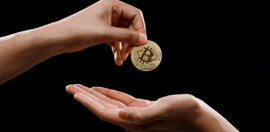Human Rights and the Tin-Tin Books

6 January 2012 at 12:30 pm
This article is by Sarah Joseph, Director of the Castan Centre for Human Rights at Monash University and was first published by The Conversation. It is republished here under CreativeCommons- Attribution/No derivatives.
An upsurge of interest in Tintin, the cartoon boy reporter who was the creation of Belgian artist Hergé (1907-1983), has accompanied the release of the Tintin movie, The Adventures of Tintin: The Secret of the Unicorn, which opened in Australia on Boxing Day.
A die-hard fan as a kid, I have grown up to become a human rights lawyer. And I have learnt to my disappointment that neither Tintin nor his creator had spotless human rights records. Rather, that record is decidedly mixed.
 |
| Flickr image: Some rights reserved by Gianfranco Goria |
Some of the themes in Tintin resonate with human rights. For example, The Red Sea Sharks highlights the modern slave trade. In Tintin and the Picaros, Tintin helps his friend General Alcazar regain power on the condition that Alcazar refrains from reprisal killings. Hergé also mocks the contemporary practice of lynching in Tintin in America. Far from laudable though is the fact that while Belgium was under German occupation during World War Two, Tintin was published in a pro-Nazi paper, Le Soir.
The Shooting Star, first published in 1941, had a stereotypical Jewish villain, a wealthy industrialist called Blumenstein. One panel depicted two Jews welcoming the end of the world because they won’t have to pay off their creditors. They were removed from the later editions, while Blumenstein was renamed Bohlwinkel from the fictional country of Sao Rico.
After the war Herge was arrested several times for alleged collaboration, but he was never charged. While one can fairly think ill of Herge’s gutless stance during the war, he was not alone amongst artists who kept their heads down under Nazi occupation.
On the other hand, Herge’s pre-war King Ottakar’s Sceptre has a poke at fascism, with one villain named Musstler, an apparent combination of Mussolini and Hitler. Communism is slammed in Tintin in the Land of the Soviets (though its anti-Soviet propaganda is pretty lame) and totalitarianism in The Calculus Affair.
Rampant capitalism is satirised in Tintin in America and demonised via the war-mongering multinational oil companies in The Broken Ear and Land of Black Gold. The respective multi-millionaires in Flight 714, Tintin’s main adversary Rastopopoulos and Laszlo Carreidas, compete in a memorable scene over who is the most evil. Alcazar’s rebel Picaros in Tintin and the Picaros are sponsored by the International Banana Company, an ironic nod to the role of multinational fruit exporters in Latin American unrest.
Democracy is not necessarily promoted in the books. The benevolent Ottakar was an absolutist monarch. Tintin was also pals with two dictators who ruled with an arbitrary iron hand, General Alcazar and Emir Ben Kalish Ezab. However, Herge clearly acknowledged their failings. Early on in Tintin and the Picaros, Tintin flies into fictional San Theodoros, where people live in devastating poverty under heavy policing with a sign towering over them, “Viva Tapioca” (honouring Alcazar’s rival, General Tapioca). As Tintin flies out on the last page, having engineered a bloodless coup, the same people languish in the same poverty in the same police state, the only change being the sign, “Viva Alcazar”.
The Blue Lotus, first published in 1936, portrays China prior to and during the imperialistic Japanese invasion. The panels where Japan engineers the Mukden incident as a pretext to invade China, and its staged walkout from the League of Nations, are masterpieces.
Herge tackled racism in The Blue Lotus, particularly when Tintin and his young friend Chang laugh at the ridiculous racist stereotypes ascribed to Chinese people. The book is also scathing in its representation of arrogant Westerners in the Shanghai International Settlement. Decades later, Herge repeated the dose in his respectful portrayal of Tibetan monks in Tintin in Tibet.
Prisoners of the Sun was ultimately sympathetic to Inca Indigenous culture, threatened by Western plundering of its treasures (though one might think that sun worshippers would understand an eclipse). There was also acknowledgment of the mistreatment of Indigenous people in Tintin in America, ahead of its time in 1931, when they are pushed off their lands by unscrupulous oil speculators. Finally, Herge highlighted the racism suffered by the Roma in The Castafiore Emerald, who are forced to live on a garbage dump and are automatically accused, wrongly and without evidence, of theft.
Yet Herge was not, unfortunately, immune from employing racist stereotypes himself. For example, the Japanese in The Blue Lotus fare very badly. Notoriously, Tintin in the Congo vies with The Shooting Star as Herge’s greatest literary sin. First published in 1930, it depicts an arrogant Tintin gallivanting around the Belgian Congo chasing gangsters, dispensing his patronising white man’s wisdom to stupid and lazy monkey-like natives. Tintin’s bloodthirsty attitude to wildlife is also astonishing.
While Tintin in the Congo is a colonial rant, the book largely reflected contemporary Belgian attitudes to its colony. However, should this racist book be freely available today? Some libraries and booksellers in a number of countries have removed the book from children’s sections. The strongest argument against its broad availability is probably not that the book will promote racism, but that it will provoke feelings of inferiority amongst children of African descent.
I find it impossible to be objective on this issue. I did not read Tintin in the Congo until I was an adult, as its translation into English was delayed until 1991 due to its controversial nature. I was very annoyed as a kid that I could not access this precious final book, so I certainly disliked the censorship. However, it was not my ethnicity that was offensively targeted in the book.
While Tintin in the Congo may be seen as of its time, the same excuse is not easily applied to The Red Sea Sharks, first published in 1958. Tintin commandeers a ship engaged in the slave trade, with villains having tricked African Muslims into boarding with a promise of transport to Mecca. While the book may have good intentions, reinforcing that the evil practice of slavery still affects African lives, the Africans are portrayed as naïve, subservient and in need of the help of white men. Having said that, every Tintin book ultimately portrays its white hero as smarter than everybody else.
Women are almost absent from Tintin’s world. Alcazar’s wife in Tintin and the Picaros is a bullying harridan, a classic misogynistic stereotype. The only major female character is Bianca Castafiore, a domineering opera star, who drives Tintin’s best friend Captain Haddock mad with her demanding self-centredness and irritating affections. Yet she is also brave, resourceful and loyal, as seen in The Calculus Affair and Tintin and the Picaros.
So, decades on, I have learnt that neither the messages in the Tintin books nor its author were entirely savoury. Furthermore, Herge’s legacy is preserved by a foundation which plays an unnecessarily heavy hand on copyright, even questioning the cartoon portrayal of Kevin Rudd as Tintin when he was Opposition Leader. But little can taint my continued enjoyment of the Tintin books: they are buried too deeply into my childhood joy.
Tintin spanned six decades from the late 1920s (though he will never die, and will presumably gain a new lease of life with the movie). He is unapologetically representative of the Western view of the twentieth century, even when some apology is needed.
The books addressed colonialism, the rise of the USSR, organised crime, capitalism, the international drug trade, the prelude to World War II (though the war itself is absent), alcoholism, racism, coups de tat, multinational corporations, the Cold War, the arms race, the space race, the modern slave trade, the arms trade, the fight for control of oil, commercial air travel, and even the rapacious media obsession with celebrity. In that regard, the Tintin books are a masterpiece chronicle of the last century.







